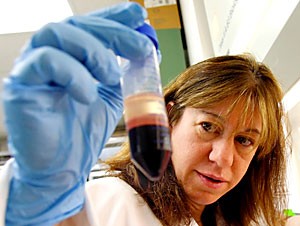heartfelt research
A new program in the College of Medicine will help the understanding of what causes heart disease and will help bridge the connection between the laboratory and the hospital room.
The Molecular Cardiovascular Research Program will investigate the causes of heart disease on the microscopic scale, helping to better treat heart disease, said Carol Gregorio, director of the program.
The research program fits into the College of Medicine’s four-fold plan to research cardiovascular disease, diabetes, cancer and neuroscience.
The program is especially important because it represents the middle ground between basic and clinical research, said Keith Joiner, Dean of the College of Medicine.
“”What we want to try to do is to fill in more of the gap between basic research and clinical research,”” Joiner said. “”What we’re trying to do is to provide more force or weight to the middle section of research.””
This middle section is better known as transitional research, or “”bench to bedside,”” which connects advances made in the laboratory to the hospital room, said Gregorio, who became director of the program in January.
The research being done by the program will fit into the bigger picture of heart research by understanding how a healthy heart functions in order to identify problems in an unhealthy heart, Gregorio said.
“”When it goes wrong we’ll understand why,”” Gregorio said.
The creation of the research program bodes well especially for the Sarver Heart Center, said Director Gordon Ewy.
“”What it means for the Sarver Heart Center is it will enhance the basic science program that we already have,”” Ewy said.
Ewy said the increased focus on research is a step in the right direction to combat heart disease, which accounts for 38 percent of deaths in the U.S.
“”Even though you’re on the right track, if you sit there, you’ll get run over,”” Ewy said, referencing a quote from Will Rogers.
Gregorio’s lab is currently researching the difference of muscle fibers in healthy and diseased tissues.
“”We’re contributing to understanding the lengths of the fibers that make up muscle,”” she said.
When the Molecular Cardiovascular Research Program moves into the new Medical Research Building this fall, it will have an entire floor to itself complete with open lab space as opposed to the individually walled labs in the Life Sciences North building, Gregorio said.
Much of the work being done in Gregorio’s lab has to deal with the characteristics of muscles, said Anke Zieseniss, a post-doctoral student and cell biology and anatomy research assistant.
Zieseniss, who is investigating the characteristics of a protein thought to be found in muscles, said understanding how something works will help diagnose many problems.
“”You have to know how the parts work together to understand it,”” Zieseniss said.









